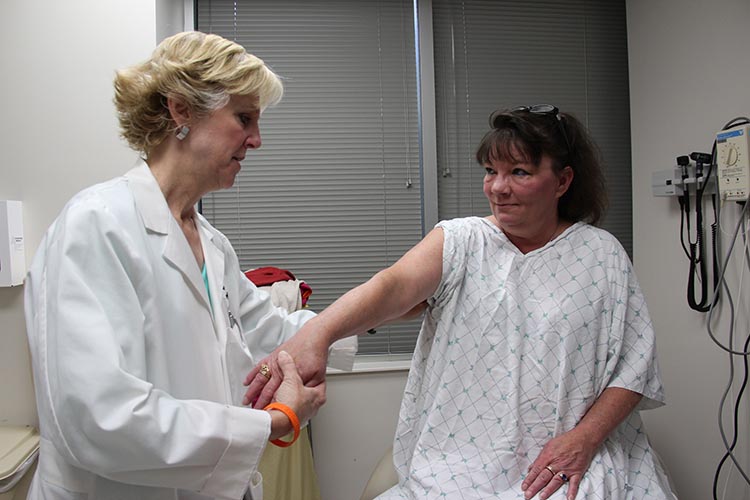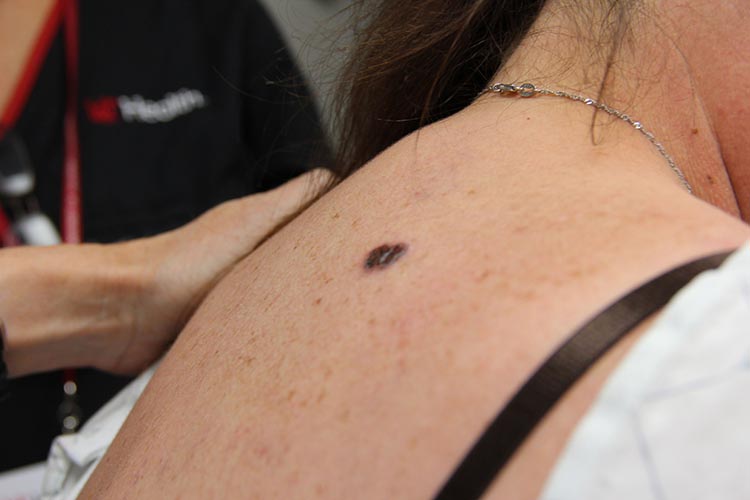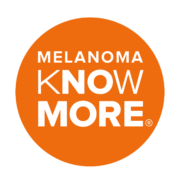
Melanoma is a malignant tumor of the pigment producing cells (melanocytes) in the body. While the majority of pigment cells are found in the skin (90%), melanocytes also are found in the eye, mouth, genitalia, gastrointestinal tract, and spinal column.
Melanoma is the most aggressive and potentially life-threatening of the three most common types of skin cancer (basal cell carcinoma and squamous cell carcinoma are the other two). The incidence of melanoma is increasing at a rate of 3% per year which is faster than any other type of cancer which is about 0.7% per year. Overall, the lifetime risk of getting melanoma is about 2.6% (1 in 38) for whites, 0.1% (1 in 1,000) for Blacks, and 0.6% (1 in 167) for Hispanics. While 4% of all skin cancers are melanoma, approximately 80% of all skin cancer-related deaths are due to melanoma.
The incidence of melanoma is increasing in all socioeconomic groups and the incidence of all types of melanoma (including both in situ and invasive types) is increasing. The groups that have shown an increased incidence in particular are men over 50 years of age, young women in their 20s, the poor (who also have a higher mortality rate), and obese patients.
Facts About Melanoma
- Skin cancer is the most common cancer in the United States. 1 in 5 Americans will develop skin cancer in their lifetime.
- Melanoma accounts for 5% of all skin cancers and 71% of all skin cancer deaths. It is estimated that one in every 50 Americans is diagnosed with melanoma.
- The incidence rate of melanoma is increasing faster than that of any other type of cancer. Melanoma is growing at an epidemic rate with an estimated 3% increase in cases annually.
- Invasive melanoma is projected to be the fifth most common cancer for men (60,190 cases) and the sixth most common cancer for women (40,160 cases) in 2020.
- It is estimated that 100,350 new cases of melanoma will be diagnosed in the U.S. in 2020.
- Caucasians and men older than 50 have a higher risk of developing melanoma than the general population.
- The incidence in men ages 80 and older is three times higher than women of the same age.
- The annual incidence rate of melanoma in non-Hispanic Caucasians is 26 per 100,000, compared to 5 per 100,000 in Hispanics and 1 per 100,000 in African-Americans.
- In people of color, melanoma is often diagnosed at later stages, when the disease is more advanced.


- Before age 50, melanoma incidence rates are higher in women than in men, but by age 65, rates are twice as high in men.
- Thirty percent of all melanoma in men arises on the back, it is important to ask your doctor to examine your skin carefully for atypical moles.
- Melanoma in Caucasian women younger than 44 has increased 6.1 percent annually, which may reflect recent trends in indoor tanning.
- Melanoma is the second most common form of cancer in females age 15-29.
- Melanoma is increasing faster in females age 15-29 than in males of the same age group.
- In most cases, melanoma arises from a previously existing mole, and it can spread to other locations if not treated.
- When melanoma is detected at an early stage, surgical removal cures the disease in most cases.
- Genetic factors are the most important of known risk factors, including the familiar tendency to develop melanoma, prominent moles, and atypical moles.
- Overexposure to ultraviolet radiation in sunlight is believed to be a contributing factor to most cases of melanoma; short periods of intense exposure, such as sunbathing is associated with higher risk.
- The most important warning sign for skin cancer is a spot on the skin that is changing in size, shape, or color.
- Careful skin self-examination is associated with reductions in late-stage melanoma.
- Patient or family-discovered melanoma accounts for more than half of all melanoma diagnoses. The key is to check yourself!



